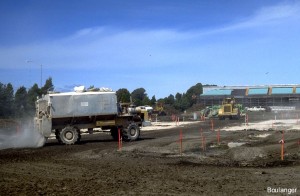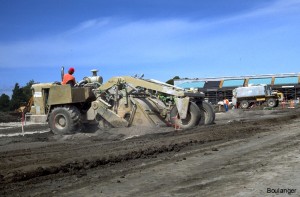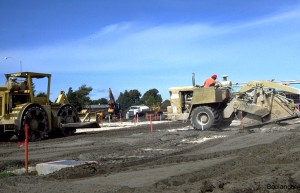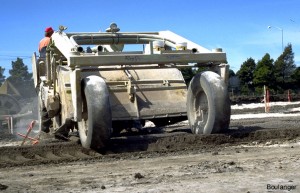These photos show the use of lime to treat expansive soils during site work for a large retail outlet in the east Bay Area in 1990. The building will have a slab on grade, and the native soils are susceptible to swelling and expansion upon wetting (high plasticity clays). Hydrated lime reacts with the clay minerals in the soil, reducing its potential for swelling and expansion upon wetting. A pad or layer of lime-treated soil will be constructed over the entire building footprint prior to construction of the slab foundation.

A truck sprays lime powder uniformly on the ground surface after it has been graded, but before it is compacted. The area is divided into sections by the wooden stakes to help guide the operators. The amount of lime depends on the soil characteristics, but is typically a few percent of the treated soil’s dry weight.

This self-loading scraper is equipped with mixers inside its bucket. It scrapes up soil that has already been sprayed with lime, mixes it within its bucket, and then spreads it back over the ground surface.

The caterpillar on the left grades the treated areas and compacts the soil with its sheepsfoot rollers. A water truck (white, distant center of photo) sprays the soil with water to achieve the target water content prior to compaction.

